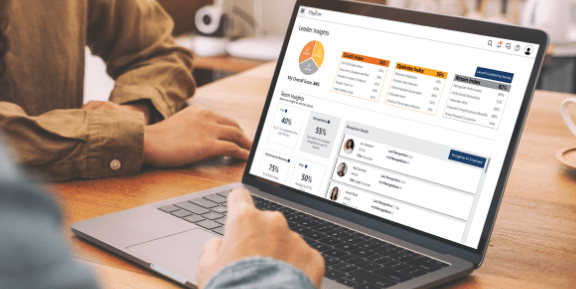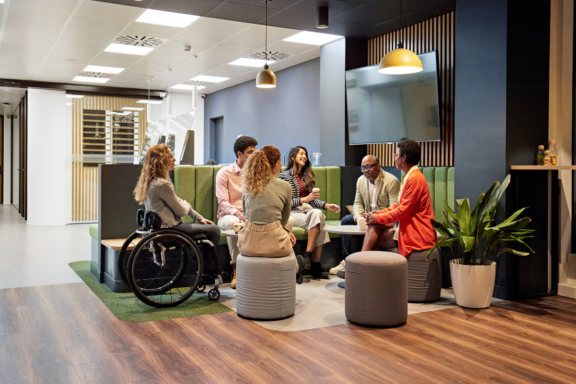Diversity isn’t just a buzzword anymore. It’s become a business necessity. But here’s what most people miss: true workplace diversity extends way beyond the characteristics we typically think about.
Sure, we all know diversity matters. Companies with diverse teams outperform those without diversity initiatives and as well as financial returns above their respective national industry medians (McKinsey).
Yet despite knowing this, progress remains frustratingly slow. Why? Because many organizations are only scratching the surface of what diversity really means. Read on to learn more about the different types of diversity.
What is Diversity in the Workplace?
Think of workplace diversity as the complete mix of human differences and similarities within your organization. It’s not just about having different faces in the room; It’s about bringing together varied backgrounds, cultures, identities, and perspectives that actually drive innovation.
Here’s the distinction: diversity is about representation (the mix of people), while inclusion is about making those diverse groups feel valued and heard. You can’t have one without the other and expect real results.
The business case? It’s rock solid. But here’s the wake-up call: 39% of job applicants have rejected offers from companies not invested in diversity (McKinsey). For younger generations especially, your commitment to diversity isn’t nice-to-have — it’s make-or-break.
What are the Main Types of Diversity In the Workplace?
To really understand diversity, you need a framework that goes beyond surface-level characteristics. The most effective approach breaks diversity into four key areas:
Internal Diversity
These are inherent traits you’re born with that shape your identity from day one. While these attributes are foundational to who a person is, their impact is complex and often intersects with other forms of diversity.
External Diversity
These are characteristics shaped by life experiences and circumstances that change over time and influence your worldview.
Organizational Diversity
This type of diversity, which is unique to each business and results from organizational structure and how a business is staffed, focuses on the variety of roles, functions, and structures within your specific company.
Worldview Diversity
This type encompasses the variety of beliefs, values, and mental models that shape how people interpret the world around them.
Internal Types of Diversity
1. Age Diversity
Multi-generational teams are powerhouses. You get the digital fluency and fresh thinking of Gen Z and Millennials combined with the deep experience and institutional knowledge of Gen X and baby boomers. This isn’t about managing generational conflicts but, rather, it’s about leveraging generational strengths.
2. Gender Diversity
Women now make up 47% of the U.S. workforce and 46% of managers (Pew), which is real progress from previous decades. But the C-suite tells a different story. Women hold just 25% of top leadership roles (World Economic Forum), and in some industries like private equity, men are 2.75 times more likely to get promoted (McKinsey). At current rates, achieving gender parity in senior roles would take over 60 years.
3. Racial and Ethnic Diversity
Here’s a sobering stat: only eight Fortune 500 companies have black CEOs as of 2024. Women of color represent just one in 16 C-suite leaders (McKinsey). And it’s not just about numbers: a study from 2023 found that 40% of black workers report experiencing discrimination in hiring, pay, or promotions (Pew).
4. Sexual Orientation and Identity Diversity
Creating a workplace where LGBTQ+ employees can be authentic isn’t just the right thing to do. It’s essential for engagement and psychological safety. This means inclusive policies like gender-neutral parental leave and strong anti-discrimination protections.
5. Physical and Cognitive Abilities
This includes physical disabilities and neurodiversity, which includes different ways the brain functions such as autism, ADHD, or dyslexia. The key is providing accommodations, flexible arrangements, and assistive technology so everyone can contribute their best work.
External Types of Diversity
6. Socioeconomic and Educational Background
People from different economic backgrounds bring unique perspectives on priorities, problem-solving, and resource management. Mix trade school graduates with PhD holders, and you get a range of approaches that drives innovation. For example, if a retailer noticed that their frontline workers who are mostly black and Hispanic weren’t advancing because degree requirements created financial barriers, this recognition could help in redesigning the company’s advancement paths.
7. Work History and Experience
Whether military veterans, career changers, entrepreneurs, or freelancers, different professional journeys create different skill sets and problem-solving approaches. This variety improves cross-functional collaboration and sparks innovative solutions.
8. Family and Marital Status
Single employees, parents, caregivers, and empty nesters each have different work-life balance needs. Smart organizations create flexible policies and benefits that work for all family situations.
9. Geographic Diversity
Whether it’s employees from different states, countries, or even neighborhoods, geographic diversity brings insights into local markets and customer preferences. In our global economy, this cultural intelligence is invaluable.
Organizational Types of Diversity
10. Job Roles and Departments
When engineering talks to marketing, and sales collaborates with HR, magic happens. Different departments bring unique perspectives that lead to more comprehensive solutions. The key is facilitating these cross-functional conversations.
11. Seniority and Employment Type
Mix entry-level energy with senior wisdom, full-time stability with contract flexibility. Research shows that diversity in leadership actually predicts diversity throughout the organization because when people see advancement possibilities, they stay and thrive.
Worldview Types of Diversity
12. Religious and Spiritual Beliefs
Respecting different faiths means flexible holiday schedules, quiet reflection spaces, and genuine accommodation of religious practices. When people can express their authentic selves, engagement soars.
13. Political and Ideological Perspectives
This is tricky territory, but here’s the reality: 56% of workers viewed DEI positively in early 2023, dropping to 52% by late 2024. There’s also a partisan divide: 66% of Democratic workers find DEI training helpful versus 36% of Republican workers (Pew). Smart HR leaders navigate these differences with respect and focus on shared business goals.
14. Life Experiences
Everyone’s unique combination of personal experiences creates different perspectives and decision-making approaches. This diversity of experience leads to more empathetic, adaptable workplaces.
How Paycor Helps with Workplace Diversity Types
Managing this complexity requires more than good intentions. You need strategic, data-driven tools. Paycor provides the technology and expertise to turn diversity goals into measurable results.
Our talent acquisition software and smart sourcing capabilities help build diverse applicant pools and practice diversity recruiting from the start. Our talent development solutions, including Career Management Software and Paycor Paths, address those persistent promotion gaps that affect underrepresented groups.
We also provide diversity benchmarking and measurement tools so you can track progress against clear goals. McKinsey research shows that rigorous tracking and course correction are key to successful DEI initiatives.
From compliance management to leadership development, Paycor supports every aspect of building an inclusive workplace culture.
Types of Diversity FAQs
Still have questions? Read on.
How many types of diversity are there?
There’s no single number because diversity is multi-layered and complex. The most practical framework organizes diversity into four main categories: Internal, External, Organizational, and Worldview. Within these, there are countless characteristics that create workforce diversity.
What are the main types of diversity?
The most commonly discussed workplace diversity types include internal characteristics like race, age, gender, and disability status. External factors like socioeconomic background and religious beliefs are also fundamental components of a diverse workforce.









